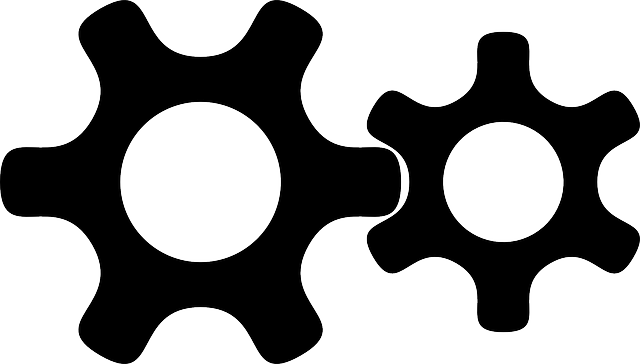Before pursuing an aerospace engineering degree, assess your interest and aptitude by reflecting on past experiences and academic performance in STEM subjects. Strengthen your foundation in physics, mathematics, and computer science with a focus on core concepts and well-rounded preparation through elective courses. Enroll in advanced math and science courses, engage with STEM clubs or robotics programs to gain practical experience and develop problem-solving skills. Participate in internships to apply theoretical knowledge and build a portfolio. Sharpen problem-solving and critical thinking skills through activities and focus on mathematics, physics, and computer science for a solid base. Familiarize yourself with essential software like CAD programs (AutoCAD, SolidWorks) and programming languages (MATLAB, Python).
Aspiring aerospace engineers, this is your roadmap to a successful launch! If you’re dreaming of designing the next generation of aircraft or rockets, preparing for a degree in aerospace engineering requires a strategic approach. This comprehensive guide takes you from high school to university, outlining 10 essential tips to set you on the right path. From assessing your passion and building a robust science foundation to exploring key courses, internships, and mastering problem-solving skills, discover the critical elements needed to thrive in this exciting field.
- Assess Your Interest & Aptitude for Aerospace Engineering
- Build a Strong High School Science Foundation
- Explore Relevant Courses & Electives
- Gain Practical Experience Through Internships
- Hone Problem-Solving & Critical Thinking Skills
- Familiarize Yourself with Essential Software & Tools
Assess Your Interest & Aptitude for Aerospace Engineering

Before diving into your aerospace engineering degree, it’s crucial to assess whether this field aligns with your interests and aptitudes. Aerospace engineering isn’t for everyone; it demands a unique blend of creativity, analytical thinking, and problem-solving skills. If you’ve ever been captivated by the wonders of flight, space exploration, or the intricate design of aircraft, this could be the right path for you.
Consider your past experiences and academic performance in STEM subjects like physics, mathematics, and computer science. A strong foundation in these areas is essential for aerospace engineering. Additionally, look for opportunities to engage with hands-on projects, such as building models or participating in robotics clubs, which can help foster the practical skills needed for this discipline.
Build a Strong High School Science Foundation

Building a solid science foundation during high school is paramount for aspiring aerospace engineers. Physics, chemistry, and mathematics are the cornerstones of this field, and a deep understanding of these subjects will provide an invaluable base for more advanced studies. High school courses should focus on mastering core concepts, as these will be built upon in college-level aerospace engineering programs.
Encourage your high schooler to excel not just in their required science classes but also to explore electives that complement scientific inquiry. Courses like astronomy, computer programming, and even robotics can offer a well-rounded preparation for the technical and innovative nature of aerospace engineering.
Explore Relevant Courses & Electives

While high school provides a solid foundation, exploring college-level courses and electives can give you a significant head start in aerospace engineering. Look for opportunities to take advanced mathematics, physics, and computer science classes. These subjects are integral to understanding the complex principles of aerospace design, flight mechanics, and navigation. Many high schools offer AP (Advanced Placement) courses that can earn you college credits, allowing you to focus on more specialized topics during your undergraduate studies.
Additionally, consider taking part in STEM (Science, Technology, Engineering, and Mathematics) clubs or robotics programs, which can enhance your problem-solving and critical thinking abilities. These experiences will not only make your application stand out but also provide practical insights into the engineering field, fostering a passion that is crucial for navigating the rigorous demands of aerospace engineering programs.
Gain Practical Experience Through Internships

Gaining practical experience is an invaluable step for aspiring aerospace engineers. Internships offer a unique opportunity to apply theoretical knowledge in real-world scenarios, providing hands-on skills and insights into the industry. During internships, students can work alongside experienced professionals, learn about different aspects of aerospace development, and contribute to ongoing projects. This not only enhances their understanding but also allows them to make informed decisions about their career path within this vast field.
Many companies and research institutions offer internship programs tailored for students pursuing aerospace engineering. These opportunities often involve working on specific projects, conducting tests, or assisting in the design and development processes. By immersing themselves in such experiences, students can build a strong portfolio, demonstrate their capabilities, and stand out when applying for university courses or future jobs in the aerospace sector.
Hone Problem-Solving & Critical Thinking Skills

Aerospace engineering demands a sharp mind and a knack for tackling complex problems, making it crucial to hone your problem-solving and critical thinking skills before embarking on this academic journey. Encourage yourself to engage in activities that stimulate logical reasoning and analytical thinking. Puzzles, brainteasers, and coding challenges are excellent tools to sharpen these abilities.
In high school or during preparatory courses, focus on subjects like mathematics, physics, and computer science. These areas provide a solid foundation for developing problem-solving strategies and algorithms—essential skills when delving into aerospace engineering. Regularly practicing word problems in math, studying the principles of mechanics and thermodynamics, and familiarizing yourself with programming languages will prepare you to tackle the intricate issues that arise in this field.
Familiarize Yourself with Essential Software & Tools

Before diving into the world of aerospace engineering, it’s crucial to become familiar with the software and tools that will be integral to your studies and future career. This includes both specialized engineering software and industry-standard applications. Start by exploring computer-aided design (CAD) programs like AutoCAD or SolidWorks, which are essential for creating detailed technical drawings and models. These tools allow you to visualize and simulate designs, ensuring they meet structural integrity and safety standards.
Additionally, become proficient in programming languages such as MATLAB or Python, often used in aerospace for data analysis, simulation, and control system development. Familiarity with these tools early on will give you a significant advantage when tackling complex engineering problems at the university level.
In preparation for a degree in aerospace engineering, cultivating an interest and aptitude, coupled with a robust academic and practical foundation, is paramount. By assessing your passion for the field, building a strong science base in high school, exploring relevant courses, gaining hands-on experience through internships, enhancing problem-solving skills, and familiarizing yourself with essential software, you’ll be well on your way to a successful career in aerospace engineering. Remember, continuous learning and staying abreast of industry developments are key to thriving in this dynamic field.
